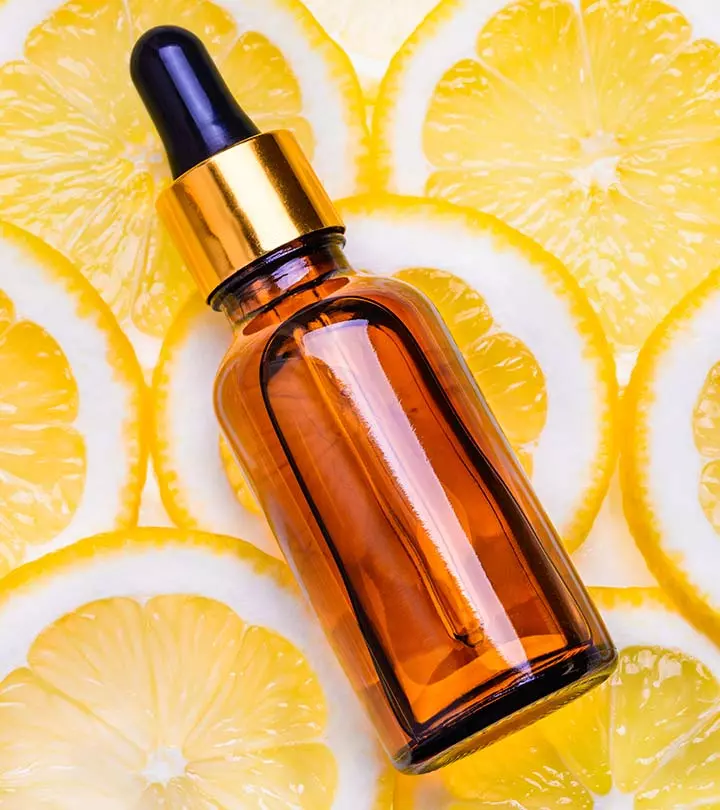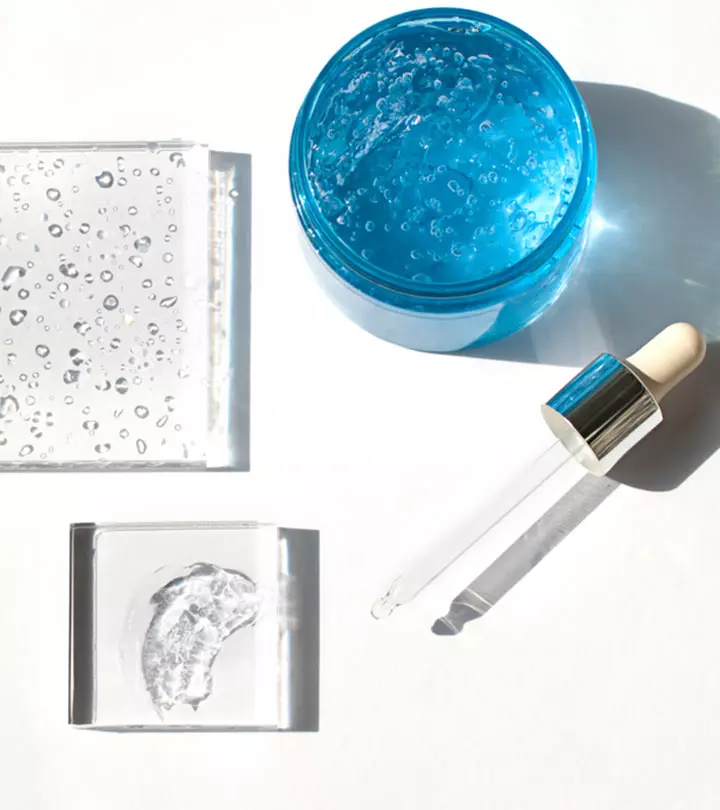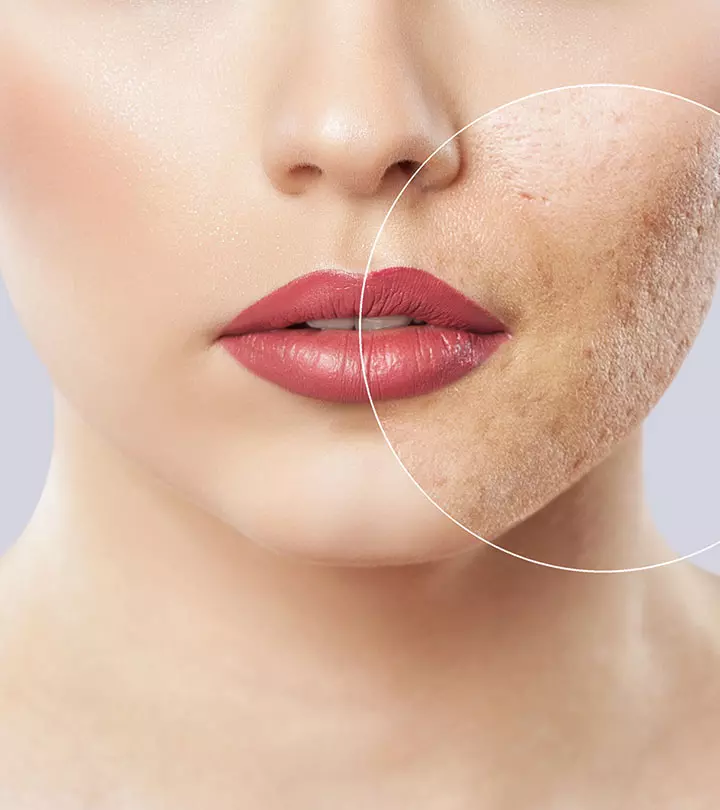Succinic Acid For Skin: How To Use It & How Does It Benefit
Discover the transformative and skin-boosting power of succinic acid on your skin

Image: Shutterstock
The truth about skin care compounds is that they only gain popularity once the beauty world begins to talk about them publicly. Case in point: succinic acid for the skin. This antimicrobial, antioxidant, and antibacterial component has been used in skin care products for a long time. It claims to help with a variety of skin problems.
Do you want to learn more about what this acid is and how it helps your skin? In the following sections, we will go over all you need to know about succinic acid and how to use it properly. Keep reading!
In This Article
What Is Succinic Acid?
Succinic acid is found naturally in amber and sugarcane and can be obtained through the process of fermentation for commercial use. Although it is not backed by enough scientific research yet, succinic acid is often compared with salicylic acid by skincare enthusiasts. While its application and benefits are under analysis, it is already being used actively in the food and pharmaceutical sector for different purposes (1).
Succinic acid was found to be soluble in ethyl esters, methanols, ethanols, and more. The acid was also found to mix well with water (2).
 Fun Fact
Fun FactIn the next section, we will explore certain purported benefits of succinic acid.
Key Takeaways
- Succinic acid is found naturally in amber and sugarcane.
- It can be produced for commercial use through the fermentation process.
- Succinic acid helps control sebum production, balance skin pH levels, and decongest skin pores.
- You can use it under your moisturizer so that it can permeate deeper into your skin’s layers.
Can Succinic Acid Treat Acne, Fine Lines, And Wrinkles?
Succinic acid is among the four fatty acids with short chains that can inhibit the growth of P. acnes, the bacteria responsible for acne (3).
Succinic acid may also help control the appearance of wrinkles and fine lines on the face. However, there are no confirmed scientific studies to back this statement. Indirect findings can be linked to the use of honey, which contains succinic acid, to treat wrinkles (4).
Succinic acid is also thought to control sebum production on the skin, balance skin’s pH levels, and decongest the skin pores. Consequently, the use of succinic acid has been linked to the reduction of blackheads and acne marks. However, research is limited in this regard.
Here are some other potential benefits of succinic acid on your skin. These are yet to be backed by concrete research:
- May slough away dead skin cells
- May target blemishes and make skin clearer
- May offer antibacterial and antimicrobial benefits
- May prevent collagen breakdown
Succinic acid may:
- Reduce Breakouts On The Skin: It possesses anti-inflammatory and antibacterial properties that may contribute to reducing breakouts, resulting in a clearer skin tone and radiant skin (3).
- Regulate Oil Production: Anecdotal evidence suggests that it may help regulate oil production by controlling sebum levels. It may also balance skin hydration by retaining water in the skin cells, preventing excess sebum production.
- Promote Cell Renewal: It may promote cell renewal by enhancing cellular metabolism. It can mimic conditions similar to low oxygen levels in cells, which could help these cells maintain their youthfulness and ability to regenerate (5). This process contributes to a refreshed complexion, potentially reducing the appearance of imperfections and promoting healthier-looking skin.
The acid seems to have some benefit for oily skin. It also may clear pores. In the next section, we will discuss the right way to use it in your skincare routine.
How Do You Use Succinic Acid In Skincare?
Succinic acid is not available as a standalone ingredient. It comes as an ingredient in a skincare product. The right way to use the product is as a treatment step in your skincare routine. You can apply it under your moisturizer where it can penetrate your skin’s deeper layers.
Laura Leanne, a YouTuber shares her 30-day journey of testing succinic acid for blemish treatment. Laura documents the progress, starting with the application process. She concludes on the last day, “It’s been really nice to use (i).” Further, she adds, “There’s been no irritation whatsoever. I generally feel like I’m putting a moisturizer on my skin like there’s been no itchiness there’s been no peeling just absolutely nothing.”
 Trivia
TriviaBut is succinic acid suitable for all skin types?
Is Succinic Acid Suitable For All Skin Types?
Succinic acid is known to exfoliate the skin gently. As a result, you may, if at all, experience very little irritation. The acid seems to be most ideal even for those with sensitive skin or who are prone to acne.
In a 2025 study in Clinical, Cosmetic and Investigational Dermatology that included 3050 participants, 1526 reported having sensitive skin, while 1524 reported having non-sensitive skin. Younger age groups, especially up to 34 years, had higher rates of sensitivity. In particular, Fitzpatrick phototypes I and III reported sensitive skin. Individuals with these skin types may consider adding succinic acid to their skin care routine.
However, there are no proven side effects of succinic acid. Unless someone has a specific allergy to the acid, just about anyone can make use of it. But you can still perform a patch test to check how your skin reacts to the acid. If you experience any adverse reactions to succinic acid or are unsure if you must use it, consult a dermatologist.
Some believe succinic acid, when combined with hyaluronic acid, can give great results. How far is this claim true?
Succinic Acid And Hyaluronic Acid: The Cosmetic Uses
Using hyaluronic acid and succinic acid together may have significant results on the skin. These include added moisturization, skin lifting, and smoothening of the skin texture. It also helps exfoliate the skin. Over time, this combination can also reduce skin hyperpigmentation (6).
Succinic acid has antimicrobial and anti-inflammatory properties, among other things. This makes it ideal for treating acne, reducing excess oil production, and minimizing the appearance of fine lines. It is also mild enough for all types of skin, even sensitive skin, which isn’t something you can say with all acids. Combining it with hyaluronic acid appears to provide further benefits. While research regarding the benefits of succinic acid for skin is limited, it is considered safe to use. However, if you experience irritation, discontinue use and consult your doctor immediately.
Frequently Asked Questions
Can you use succinic acid every day?
Yes, succinic acid can be used as a daily moisturizer since it is quite moisturizing, gets absorbed quickly, and feels comfortable on the skin. But, first, perform a patch test and wait 24 hours to ensure that your skin is compatible with the ingredient.
Is succinic acid good for dark spots?
Anecdotal evidence suggests that succinic acid helps prevent dark spots while remaining gentle on the skin. However, there is no scientific evidence to back up this claim.
Is succinic acid better than benzoyl peroxide?
Succinic acid is said to be better than benzoyl peroxide since it is gentler and less drying, making it an excellent choice for sensitive or inflamed skin.
What is another name for succinic acid?
Succinic acid is also known as butanedioic acid.
Succinic acid is quickly becoming a widely popular element in the world of skincare. Check out this following video showing you how succinic acid helps rejuvenate your skin, and how it can become a part of your daily skincare routine.
Personal Experience: Source
StyleCraze's articles are interwoven with authentic personal narratives that provide depth and resonance to our content. Below are the sources of the personal accounts referenced in this article.
(i) 30 DAYS OF…The Inkey List Succinic Acid | 1 MONTH REVIEWhttps://www.youtube.com/watch?v=uAI4kroPh2Q
References
Articles on StyleCraze are backed by verified information from peer-reviewed and academic research papers, reputed organizations, research institutions, and medical associations to ensure accuracy and relevance. Read our editorial policy to learn more.
- Succinic Acid: Technology Development and Commercialization:https://doi.org/10.3390/fermentation3020026
- COMPOUND SUMMARY Succinic acid:https://pubchem.ncbi.nlm.nih.gov/compound/Succinic-acid#section=Safety-and-Hazards
- Staphylococcus epidermidis in the human skin:https://multisearch.mq.edu.au/discovery/fulldisplay?docid=cdi_pubmedcentral_primary_oai_pubmedcentral_nih_gov_3888247&context=PC&vid=61MACQUARIE_INST:MQ&lang=en&search_scope=MyInst_and_CI&adaptor=Primo%20Central&tab=Everything&query=sub,exact,%20Staphylococcus%20epidermidis%20-%20metabolism
- Bee Products in Dermatology and Skin Care:
https://www.ncbi.nlm.nih.gov/pmc/articles/PMC7036894/#B52-molecules-25-00556
- Effects of succinic acid on dermal fibroblasts during cultivation under extremely hypoxic conditions https://www.ncbi.nlm.nih.gov/pmc/articles/PMC9868325/
- Treating hyperpigmentation using a combination of hyaluronic and succinic acids”https://proscience.pt/img/cms/Treating%20hyperpigmentation%20using%20a%20combination%20of%20hyaluronic%20and%20succinic%20acids-PRIME%20Journal-Maurizio%20Ceccarelli.pdf.
Read full bio of Dr. Sreekar Harinatha
Read full bio of Arshiya Syeda
Read full bio of Ramona Sinha
Read full bio of Swathi E


























Community Experiences
Join the conversation and become a part of our empowering community! Share your stories, experiences, and insights to connect with other beauty, lifestyle, and health enthusiasts.